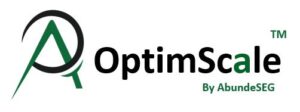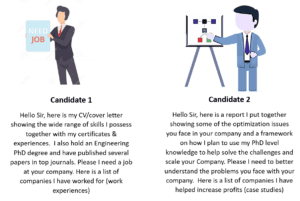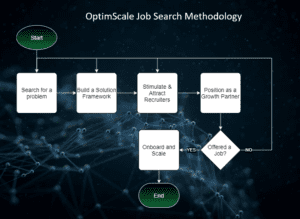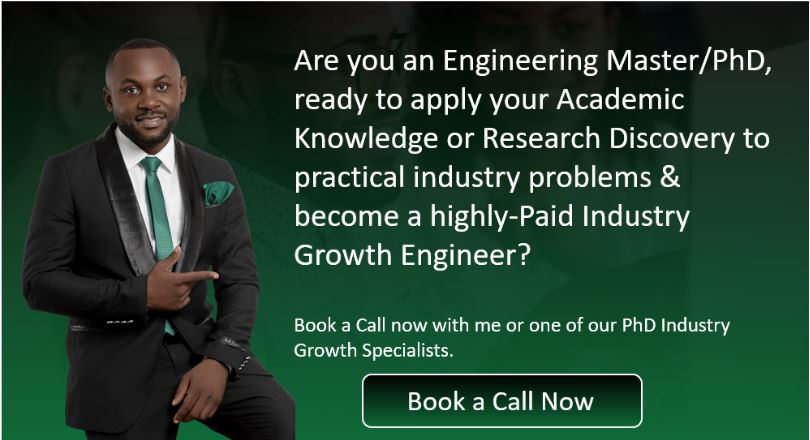If you’re an Engineering PhD and do this, you’ll only get low paying jobs: Using the Growth Optimization Potential to Access High-Paying Industry Jobs.
By Fabrice Abunde (ScientistMBA, PhD)

In the current job market, the employer identifies, a practical problem, comes out with the steps required to solve the problem (job description) and puts out a call to get a candidate that can do the job.
Because the employer has already done a greater part of the job (identifying the problem and finding the solution steps), the salary of such jobs will always be low, and the nature of the job will be routine and NOT innovative. This explains why the salary for the industry jobs you get never gets to the 7-Figure range.
As an Engineering PhD, never forget the fact that you are a researcher. You are highly trained in identifying problems and finding solutions to those problems. Think of all the uncountable hours, days, week, months, and years (even decades!) you’ve spent trying to find answers to the world’s toughest unknown questions.
The only difference between employers and you is that while they identify practical problems that businesses face, you identify problems by searching for knowledge gaps in the literature. You spend time finding solutions to a problem just to fill a knowledge gap and if a problem comes from the literature, the solution will only end in the literature because no one needs it.
With the Growth Optimization Potential, Engineering PhDs can now identify practical business and industry problems, apply their engineering skills to come out with the job description and now search for recruiters who face the problem. With such an approach, Engineering PhDs are now commanding extremely high salaries and flexible work schedules because they aren’t paid for their time, but for the results they bring.
Also, in every job market only 30% of employers are problem aware, the remaining 70% are not aware of the problems they face. This means for the jobs you see posted out there, it’s from the 30% of recruiters who have been able to identify their problems and come out with the solution steps (job description). So, if you can help employers identify practical business/industry problems and come out with solution steps (which as engineering PhDs you are very good at), then you tap into the 70% hidden job market that is not readily available to other job candidates.
This is the new approach engineering PhDs are using to earn salaries as high as $200k to $1M per year and in this article, I will show you how to do same.
Engineering PhDs now fight with Masters and Bachelor candidates for similar Industry Jobs.


There was a time when getting an Engineering PhD was a thing of glory. It was deeply challenging to obtain an advanced degree, but once you had it, career success was inevitable. You were treated as valuable in both industry and academia.
But this is no longer the case.
For most Engineering PhD students and postdocs, tenured professorship is a lie. Day in and day out, Engineering PhDs exhaust themselves and allow academia to exploit their competence at a very low pay compared to their industry counterparts.
When they manage to transition to industry jobs, they get trapped in routine repetitive jobs, executing the same tasks as Bachelor and master’s graduates. Very few industry jobs offer you the opportunity to simultaneously command a very high salary and enjoy the passion of seeing your PhD level knowledge in practise.
The goal of every Engineering PhD is not to stay in academia and just teach and conduct theoretical research for a low pay, but to use their highly technical engineering skills to contribute to the society, business, and economic development. But this is never the case.
Who is this Article For?
If you’re reading this document, there’s a good chance that you hold an Engineering PhD degree, and you’re unemployed, underpaid, or unsatisfied with the working conditions at your university or industry job.
- Perhaps you have spent 3-5 years conducting a high-quality research project, published in top academic journals but get all this research results abandoned in the lab or your university library while you end up unemployed or underpaid in the job market.
- Maybe You’ve sent out several CVs to job applications but either get a rejection, no response or hear that you are overqualified or underqualified for the job. When you get a job offer, the pay package (salary) is so low.
- Maybe you tried to transition to an industry job, but you got trapped in routine repetitive tasks, which doesn’t give you the opportunity to feel the true value of your engineering PhD degree.
- Maybe you even tried launching a company from your research discovery but ended up failing or struggling to scale because you don’t have enough VC funding to scale your business.
- Maybe you tried to find out how to apply your specific engineering skills to solve practical industry or business problems but end up not knowing where to start.
- Maybe you’re just there spending long hours in academia with a low salary, unsure of what to do with your Engineering PhD
Never than before, the skills of Engineering PhDs are highly valuable in the industry and business world, to identify the right business problems, and then find the right answer to that problem.
As Engineering PhDs, you know how to attack problems from a quantitative perspective. You know how to search the literature, dig into journal articles, and book references, develop models to make decisions that solve problems.
While most people are skimming nonsense on a message board, you have the quantitative research skills needed to dig deeply into Google Scholar and PubMed to find credible information. Employers value this.
Less than 1% of the population has an Engineering PhD. Why? Because earning an Engineering PhD degree is difficult. A Master’s degree is granted to those who have mastered a science field, a PhD is granted to those who have added to science, but an Engineering PhD is granted to those who have added to and applied science.
The Big Idea about getting a High-Paying Industry Job.
First, here’s the truth … you can get a high-ticket industry job where you earn between $200k to $1M per year while enjoying a flexible work schedule and feeling fulfilled because you apply your PhD level knowledge to identify and solve practical business or industry problems that help companies scale to significant profits.
However, there has been no framework to help Engineering PhDs identify practical business or industry problems, which when solved will generate significant profits.
The big idea is this… Unlike low/average paying jobs where employers identify the problem, establish the solution (job description) and search for the right job candidate, high-paying jobs ($200k to $1M per year) require that the candidate search for the problem, find the solution and search for the employer who faces the problem.
Consequently, Engineering PhDs end up underpaid in academia, unemployed or trapped in routine average pay industry jobs not because they can’t find solutions to problems, but because they can’t identify practical business/industry problems, which when solved will help companies significantly scale in profits.
How I Discovered the Growth Optimization Potential
For those of you who don’t know me, my name is Fabrice Abunde (PhD), an Engineering PhD like you. A few years ago, I wanted to get a highly paid industry job, where I can apply my PhD level knowledge to identify and solve practical business or industry problems that help companies scale to significant profits.
I looked everywhere for a strategy on how to do this, but I found nothing other than a few books & articles on SWOT analysis, fishbone diagrams, questionnaires, etc, which could only help me analyse problems but not tell me which problem have a high potential to generate profits when solved.
I didn’t want to waste my time on problems that are not directly linked to profits. I decided to take matters into my own hands and run a series of experiments to find the best strategies that could help an engineering PhD like me earn tens of millions by translating my academic knowledge into solutions for burning industry problems.
Then I discovered the OptimScale Growth Optimization Potential (GOP), an intelligent parameter that measures the health status of every company, identifies the optimization problems that are limiting profits and shows me how to apply the model-based engineering approach to solve the problem and scale the company to significant profit levels.
My strategy worked so well, that I now earn 4 times the pay of Engineering PhDs by working with different companies to help them scale. First, within 3 months working with a water Tech Group, I brought in over $100k.
I went on to scale 2 other companies within 12 months: one in the developed world to over $1M in Annual Recurrent Revenue and one in developing world to over $250k all while being hilariously profitable.
Every other company wanted to employ me so that I could do the same for them and every Engineering PhD wanted to know how I managed to scale companies just by identifying problems and using process modeling and the scientific method to provide a solution.
To date, this strategy has earned me board seats for several companies, invited speaker at leading companies, universities, and institutions, and breaking a world record for developing the first Model-Based Framework to help companies scale.
Now, I don’t share this with you to impress you, but to show you that with your Engineering PhD degree you are highly desirable in the industry, and it is possible to achieve success if you use the right framework.
The Old vs the New (Growth Optimization Potential) Approach to Industry Job Search for Engineering PhDs
I know by now; you would be wondering how you can use the Growth Optimization Potential to Access High-Paying Industry Jobs. Now let me show you. First, I will look at the old method of searching for jobs before I show you the new approach. Ready for it??, let’s go…
Old Method
In the old method of searching for job opportunities, you subscribe to job listing sites as well as search google & company websites for information on all the job openings for the companies or job types you are interested in.
You even try to network with industry professionals via in person events or social media (e.g. LinkedIn) hoping to get job referrals.
Old Result
When you use this approach, you fall into the competition pool. Job opportunities you see via online sites and searches are also available to hundreds or even thousands of other candidates.
When you submit your resume to these types of jobs, you mostly get no response. Secondly, when you network and ask people for jobs you rarely get referrals.
This is because asking people for jobs makes you appear poor and needy. Imagine holding an Engineering PhD degree and moving around asking for jobs. People expect value from you and not you are asking for value.
Also, you will never get a job posted online where you can earn 200k to 1M per year. Salaries are always fixed at a low rate based on the tasks listed in the job requirements.
New Method:
Instead of searching/asking for job openings, rather search for problems that are faced by the companies you are interested in. Every company wants to scale and increase profits by either increasing revenue or reducing cost. So, identify problems that when solved will allow these companies scale in profits.
New Result:
When you use the problem-search approach, you identify unique opportunities void of competition. Companies don’t post their problems to job sites, so when you identify problems, you are already far ahead to getting a job.
When you network and ask people for problems they face, which is preventing them from scaling, you appear as a confident expert who has value to add. Also, when you identify company scaling problems, it has no salary attached to it. You can earn as high as possible depending on the level to which you help the company scale.
For instance, if you solve a scaling problem that earns a company $10M they will happily pay you $1M. Also, by searching for problems, you access the 80% of jobs from recruiters that are neither ready to hire nor still gathering information as shown on the Job Market Formula
Bottomline
In the new global economy where everyone is striving for capital efficiency, employers generally don’t care how much you know until they know how much you care. When you search or ask for jobs, you appear as a poor and needy PhD just looking for a job to survive.
But when you ask for problems and express desire to help solve the problems, it positions you as a confident professional, which you truly are as an Engineering PhD.
Using the Growth Optimization Potential to Identify Industry Problems
Before, when you wanted to identify the problems faced by a company, you would have to prepare a series of questionnaires and organize informational interviews to talk with stakeholders of the company so you can understand the challenges they face when trying to scale their business.
But now, you make use of OptimScale’s Growth Optimization Potential (GOP). GOP is an intelligent score that measures the ability/chances of a company to be scaled.
It shows the financial potential of a company that is not being exploited due to optimization problems. For every company you choose, you just get information from their website and social media profile and input into the GOP Excel Model to calculate the GOP Score. The higher the GOP the lower the health status of the company and the better the chances of the business to scale in profits.
GOP also shows you the specific points in the company that face challenges and that are contributing to the high GOP score. GOP also gives you an idea of your potential earnings working with the company as a Growth PhD.
NB. For Banks and Microfinances, GOP lets you compare the investment readiness level of different startups and determine which has the potential to generate ROI with minimal risk. Simply put, you determine which startup to allocate loans and maximize your ROI.


If you want to calculate the GOP of a company, here are the following considerations you need to know.
First, every business has 3 main Engines: Demand Generation (DG) Engine, Demand Conversion (DC) Engine and Demand Fulfilment (DF) Engine.
- The DG Engine is used to make people become aware of the products/services offered by the company;
- The DC Engine is used to convert those who become aware into people who pay money to have the product/service;
- The DF Engine is used to ensure that those who pay money get the transformation they desire from product/service; i.e. they get the results the desire, or solve the problem want to solve.
If a company is facing problems that prevent it from scaling (or that affect its profits), it will be reflected in one or more of the engines. Put in another way, if a business is not functioning properly, it means at least one of the engines are not working properly: either the engine does not exist, or it’s poorly configured.


The GOP score is computed considering the following 10 questions, which all together evaluate the functioning of the different aspects of the three engines. The answers to these questions will determine the score that you input in the respective section of the GOP Excel Model.
Now let’s move to the questions…
Evaluation of the Demand Generation Engine
1. Sourcing:
Does the company have any deterministic way to get people become aware of their product or service or do they use any form of paid advertising?
If the company has no deterministic way, it means they face the problem of revenue uncertainty as they can’t decide on the amount of revenue, they want to make within a given period.
So, if the answer to this question is NO, the company gets a score of 1 under sourcing else input zero. The information to answer this question is obtained by checking the company’s social media handles or website to see if they do any form of paid marketing.
2. Targeting:
Is the company’s marketing message targeted to a specific customer segment?
If the company is selling to everyone (marketing message not targeted to a specific customer segment), they face the problem of high customer acquisition cost due to low market message resonance. So, if the answer to this question is NO, input a score of 1 under Targeting else input zero.
The information to answer this question is obtained from checking the headline on their website or any of their marketing posts to see if it’s niche specific or not.
Generally, we prefer a company that has a specific marketing message targeted to a specific customer segment. The goal of every startup/company is to increase the pressure (P) they apply in the market and to do so, they must reduce your area to increase the pressure (P=F/A)
3. Positioning:
Does the company have a visible claim and unique selling proposition (USP)?
If the company has no claim or USP, it means they face the problem of market rejection or they must sell at a very low price (compared to their competitors) in order to survive in the market. So, this will greatly affect their profit margin.
So, if the answer to this question is NO, input a score of 1 under positioning else input zero. The information to answer this question is obtained by checking the headline or landing page of their website to see if it includes a clear value proposition and a new approach to deliver the value.
4. Call-to-Action:
Is the company’s marketing call-to-action education and lead capture? Put in another way, when the company makes a paid or organic marketing post, do they first offer people free value in advance (usually educational content to help interested people solve a problem) and capture lead information?
If the company doesn’t offer value in advance or if they just require prospects to buy directly from marketing posts, it means they face the problem of inefficient use of marketing budget. This blows up their cost to acquire a customer and reduces their profits.
So, if the answer to this question is NO, input a score of 1 under call-to-action else input zero. The information to answer this question is obtained by checking their website, social media posts, or any other marketing outlets they use.
Evaluation of the Demand Conversion Engine
Does the company have a system (long form VSL + Quiz) to prequalify & warm up people who become aware of their product/service before proceeding to close them?
If they have no such system, it means they face the problem of inefficient use of human resource coupled to low closing rate. Put in another way, their engineers and/or sales team will be wasting time showing product/service demos or explaining product features and benefits to people who show interest only to end up realizing that they don’t buy.
So, if the answer to this question is NO, input a score of 1 under preframing else input zero.
The information to answer this question is obtained by going through their website as though you were a client who wants to buy. See the it takes you through a long form whitepaper (video or text format) and ask you to fill in a questionnaire or take a quiz before giving you access to talk to a staff. If this doesn’t happen, it means they don’t have any system to warm up and prequalify.
6. Closing:
Does the company use a closing catalyst to convert those who become aware into people who pay money to have their product/service? Simply put, do they have a clear process and a trained staff to close clients?
If the company has no such process, it means they face the problem of low and/or fluctuating closing rates. They have a conversion problem which will affect their profits.
So, if the answer to this question is NO, input a score of 1 under closing else input zero.
The information to answer this question is obtained by going through their website as though you were a client who wants to buy. See if they dedicate a specific staff to walk you through a clear closing process, usually in the form of a PowerPoint presentation.
If this doesn’t happen, it means they don’t use a Closing Catalyst.
Demand Fulfilment Engine
7. Ticket Size:
Does the company sell a high-ticket product/service? A high-ticket product/service is one that has a gross profit >1000USD (if the company is in a developing country) or >3000USD (if the company is in a developed country).
Put in another way, for every client they get, they make a gross profit >1000USD (if the company is in a developing country) or >3000USD (if the company is in a developed country).
If the company doesn’t sell a high-ticket offer, it means the company’s business model will not be scalable, problem of unscalable business model especially when trying to use paid advertising.
Also, for certain types of service companies (e.g., coaching, consulting, etc) they will face the problem of low client success rate as people who pay for the service will not take the solution seriously.
Since they don’t take time to implement the solution, they will not get the transformation they desire, which will in turn lead to bad reviews and low client acquisition rate.
So, if the answer to this question is NO, input a score of 1 under ticket size else input zero.
The information to answer this question is obtained by going through their website or social media handles. In case this is not visible on their website, you can go through their sales process as though you were a client who wants to buy.
8. Protocol:
Does the company have a scalable, employee independent protocol to help clients who pay money use the product/service to obtain their desired transformation? Simply put, do they have a clear process that can help clients make use of their solution with minimal help from the company’s employees?
If the company has no standard protocol, it means the demand fulfilment engine is not scalable. They face the problem of unscalable solution delivery mechanism.
So, if the answer to this question is NO, input a score of 1 under protocol else input zero.
The information to answer this question is obtained by going through their website as though you were a client who wants to buy. See the if they talk about a specific client fulfilment process. Also, it is good to note that majority of startups don’t have a scalable protocol. So, what I always do here is put a score of 1 and verify when I start working with the company.
9. Control:
Does the company have a system to continuously measure, evaluate and improve their performance?
If the company has no such system, it means they face the problem of poor resource management. They use more resources than the output they get.
So, if the answer to this question is NO, input a score of 1 under control else input zero.
Generally, 90% of startups don’t have a system to continuously measure, evaluate and improve their performance. So, what I always do here is put a score of 1 and verify when I start working with the company.
10. Case Studies:
Does the company have any primary, successful case studies? Do they have people who have paid money and obtained success from using their product/service?
If the company doesn’t have any such case studies, it means they face the problem of product or service uncertainty. They will face the problem of uncertainty by the prospective clients.
Also, they will get low investment rate in case they are trying to raise funds from banks or private investors.
So, if the answer to this question is NO, input a score of 1 under case studies else input zero.
The information to answer this question is obtained by going through from their website or social media handles. Companies will always post their case studies. You can also check google reviews.
When you input all the values into the GOP Excel Model, it makes use of a weighted percentile approach to determine the GOP score of the company.
- If the score falls between 0 and 30%, then company presents a low growth potential. The company is in good health and doesn’t present a very good job opportunity. You will not earn much money if you work with them.
- If the score falls between 30% and 70%, then company presents an average growth potential. The company is surviving but presents a good job opportunity to apply model-based engineering to scale the company. You will earn a very good salary from such a job.
- If the score falls between 30% and 70%, then company presents a high growth potential. The company is in bad health and presents and excellent job opportunity to apply model-based engineering to scale the company. You will earn an extremely high salary and even a percentage of revenue.
Benefits of using the Growth Optimization Potential
The GOP doesn’t just identify problems, it identifies problems which when solved, will significantly increase profits for the company.
With the Growth Optimization Potential, Engineering PhDs can now identify practical business and industry problems, apply their engineering skills to come out with the job description and now search for recruiters who face the problem.
With such an approach, Engineering PhDs are now commanding extremely high salaries and flexible work schedules because they aren’t paid for their time, but for the results they bring.
Also, in every job market only 30% of employers are problem aware, the remaining 70% are not aware of the problems they face.
This means for the jobs you see posted out there, it’s from the 30% of recruiters who have been able to identify their problems and come out with the solution steps (job description).
So, if you can help employers identify practical business/industry problems and come out with solution steps (which as engineering PhDs you are very good at), then you tap into the 70% hidden job market that is not readily available to other job candidates.


How to Get Started
There are a couple of ways you can achieve this…
Option 1: You do it yourself.
Option one is to try to answer the 10 questions by yourself to compute the GOP of different companies you are interested in so you can identity problems and use your engineering PhD knowledge to solve and enjoy significant earnings. However:
- You will find it difficult to get the right answers to the questions. If the problem is wrongly identified, all the other steps will be irrelevant.
- Even when you identify a problem, you will find it difficult to apply the model-based engineering approach to solve the problem and help the company scale.
- Even if you identify the problem and cand apply model-based engineering, you might not know how to get a high-paying contract with the company, where they pay you a high upfront fee and a percentage of the revenue if you get the problem solved.
I know as engineering PhDs we are tough and can easily learn things faster. But if you try to research online, you’ll only find snippets of information. You can’t find a cohesive body of knowledge that can help you achieve this.
This means you might have to devote months or even years of research to be able to figure out everything by yourself. So, it’s possible trying to do it yourself but it will be painful, costly and time consuming.
Now because you have read this article up to this point, I know you are an Engineering PhD who really wants to succeed. So, I will provide you two other options to help you get started.
Option 2: Watch full training video here and take a quiz.
I have prepared a 2-hour free training video for you on how Engineering PhDs can use the Job Search Thesis to get jobs that pay 200k to 1M per year. The Job search thesis is part of my proprietary OptimScale Job Search Methodology exclusive for Engineering PhDs.
Option 3: Book a Free Industry Strategy Call here and talk to a Growth Specialist
On this call, I will help you figure out where you are now in terms of your industry job search and the steps you need to take to get a high-ticket industry job where you earn between $200k to $1M per year while enjoying a flexible work schedule and feeling fulfilled because you apply your PhD level knowledge or research discovery to help companies scale to significant profits.
Proofs to show that the Job Search Thesis Really Works
The Job search thesis is part of my proprietary OptimScale Job Search Methodology exclusive for Engineering PhDs. Using this methodology, I now earn 4 times the pay of Engineering PhDs by working with different companies to help them scale.
First, within 3 months working with a water Tech Group, I brought in over $100k.
I went on to scale 2 other companies within 12 months: one in the developed world to over $1M in Annual Recurrent Revenue and one in developing world to over $250k all while being hilariously profitable.
Also, don’t just take me for my word. OptimScale is built on my proprietary modeling framework for system scale up that been vetted and recognized by some of the world’s greatest publishers and news agencies such as:


Also, others have made use of the same 4-step approach to earning millions of dollars by helping startups scale.
- Professor Steve Blank (USA) who scaled 8 startups to the billions of dollars,
- Russell Brunson (USA), worked with over 30,000 startups to help them scale to the millions.
- Sabri Suby (Australia) who generated over $1.33 billion scaling thousands of startups in over 215 different niches,
- Nick Kozmin (Canada) repeatedly scaled over 2000 tech startups to the millions,
And the list goes on……
If you need help on how to use your academic knowledge or research discovery to get a highly paid industry job, where you earn between $200k to $1M per year by using the New Process Modeling and the Scientific Scaling Method (OptimScale) to Help Companies Scale, even if you have No Industry Experience, then watch full training video here or book an Industry Strategy call here to talk with me or one of our growth specialists.
For Engineering PhDs:


Hi, I'm Fabrice Abunde, PhD
After 7 years of research, I discovered the OptimScale Methodology, that helps Engineering Masters/PhDs Earn between $200k to $1M per year using Process Modeling and the Scientific Scaling Method to Help Companies Scale, Even if you have no Industry Experience.
If you want a highly-paid industry job or consulting project where you apply your academic knowledge or research discovery to help industries grow, watch full training video on how to use OptimScale Method in doing so.
About the Author: Fabrice Abunde, PhD


Fabrice Abunde


re are the most common results you'll get if you are trained and certified in the OptimScale Methodology. Here are the most common results you'll get if you are trained and certified in the OptimScale Methodology. Here are the most common r
re are the most common results you'll get if you are trained and certified in the OptimScale Methodology. Here are the most common results you'll get if you are trained and certified in the OptimScale Methodology. Here are the most common r
re are the most common results you'll get if you are trained and certified in the OptimScale Methodology. Here are the most common results you'll get if you are trained and certified in the OptimScale Methodology. Here are the most common r
re are the most common results you'll get if you are trained and certified in the OptimScale Methodology. Here are the most common results you'll get if you are trained and certified in the OptimScale Methodology. Here are the most common r
Similar Articles for you






2 Reasons why using A CV/Resume Is Rather Killing your Industry Job Search: Engineering PhDs now use the Job Search Thesis to Get Hilariously High-Paying Jobs.
By Fabrice Abunde (PhD)
Engineering PhDs end up unemployed, underpaid or trapped in routine average pay industry jobs not because they aren’t good at what they do, but because they use the wrong approach and assets to search & apply for jobs.
As an Engineering PhD you can’t search & apply for an industry job the same way regular job candidates do. Getting a highly paid industry job at the PhD Level is not about having the best CV/Resume but about having a Job Search Concept that will differentiate you from other candidates in the job market and help recruiters see you as a partner in growth and not simply a candidate searching for a job and salary to survive.






How I discovered the OptimScale Job Search Methodology that can help any Engineering PhD Transition to Industry and earn $200k to $1M per year
By Fabrice Abunde (PhD)
Consequently, Engineering PhDs end up underpaid in academia, unemployed or trapped in routine average pay industry jobs not because they aren’t good at what they do, but because they search, apply, and execute jobs, using the wrong approach and lack a Framework to translate their academic knowledge into measurable financial results for companies.
I realized that instead of starting a company or searching for a job to work for companies, Engineering PhDs can now use the OptimScale Methodology to pair with startups, apply modeling, simulation, and optimization Framework to scale the startups to Millions-Dollar companies and earn a percentage of revenue.
Get the OptimScale white paper for Free.
Step-by-step guide on how to make $200k to 1M per year using the Process Modeling
and the Scientific Scaling Method to help Companies Grow.
Join other Engineering PhDs
Become a Respected and Highly-Paid Industry Consultant. Learn How to Apply the New Process Modeling and the Scientific Scaling Method to help Companies Grow
Copyright 2023 AbundeSEG. All rights reserved

